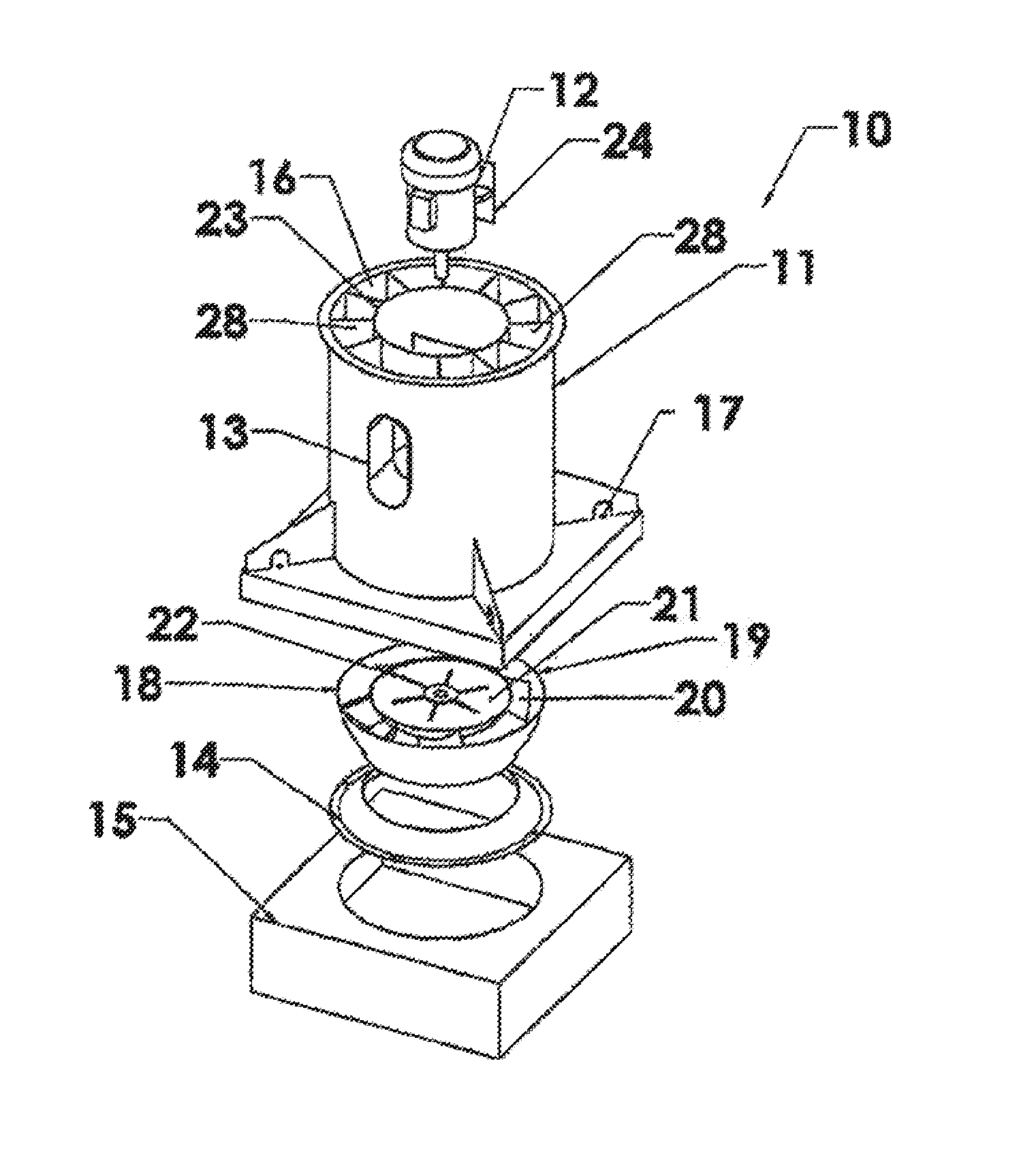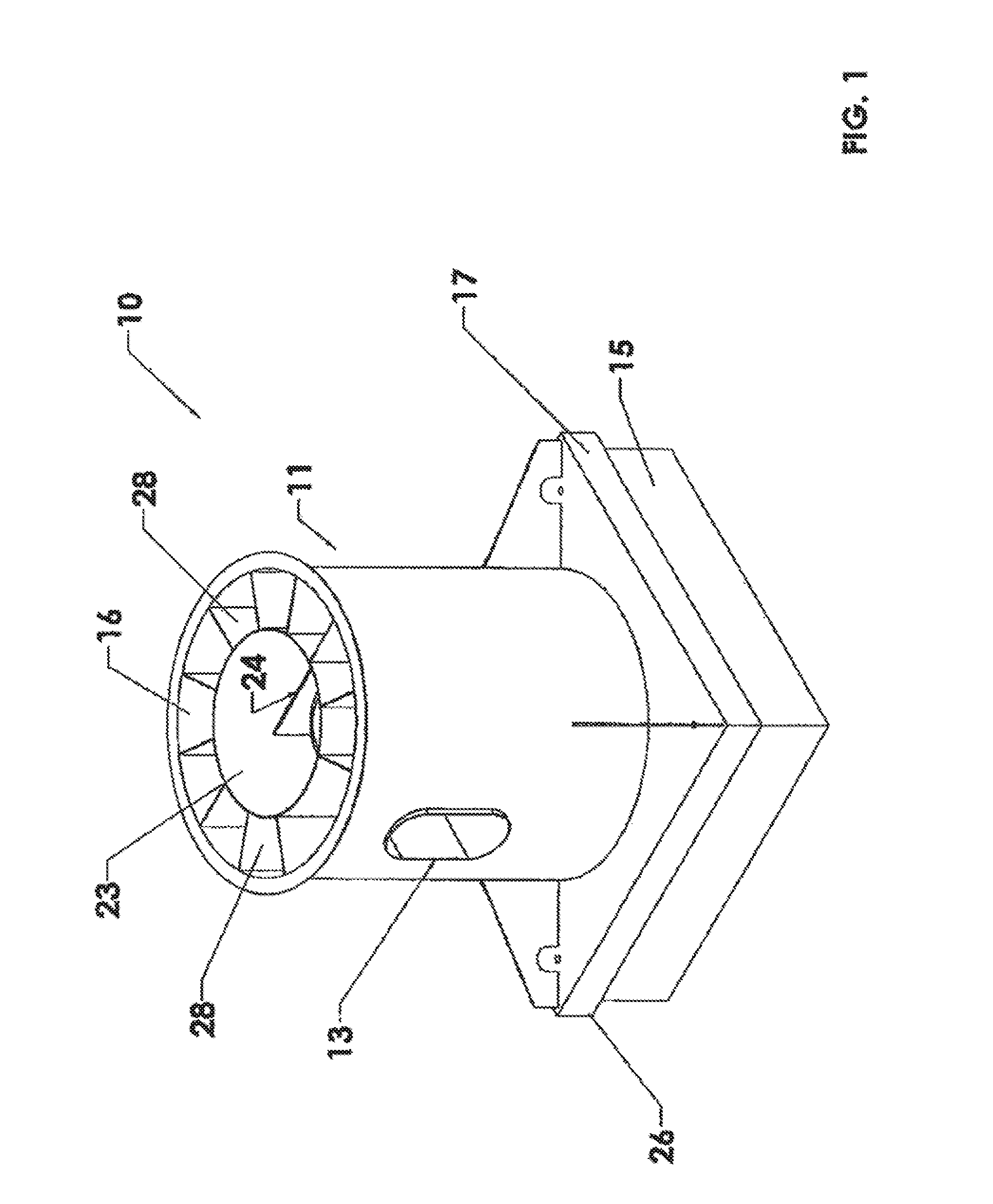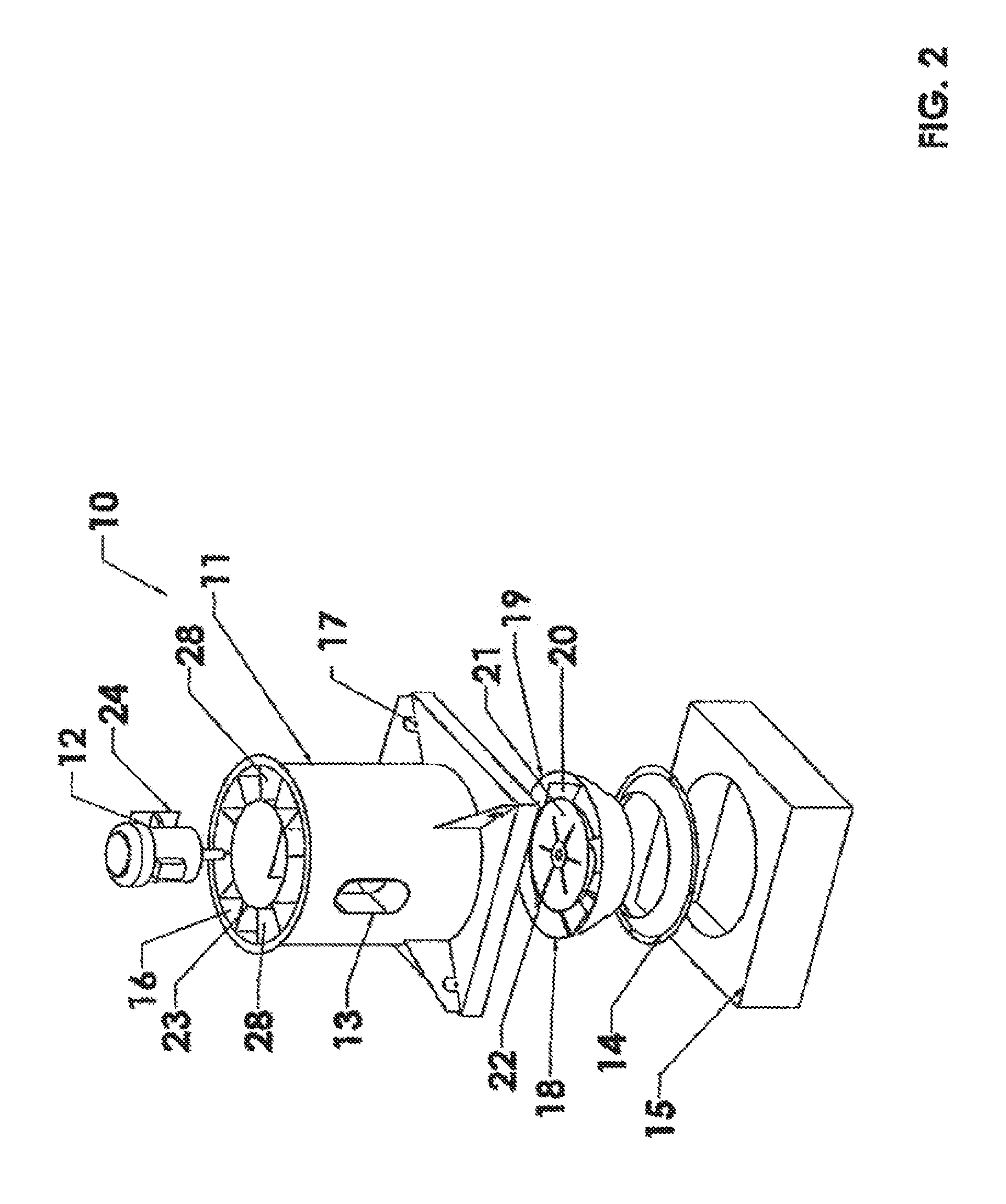Mixed Flow Fan Assembly
a fan assembly and mixed flow technology, applied in the direction of machines/engines, mechanical equipment, liquid fuel engines, etc., can solve the problems of reducing the efficiency of recirculation, consuming available energy, and reducing the total flow capacity of the impeller, so as to facilitate the mounting of blades or contours, enhance the cooling effect, and increase the volumetric flow rate
- Summary
- Abstract
- Description
- Claims
- Application Information
AI Technical Summary
Benefits of technology
Problems solved by technology
Method used
Image
Examples
Embodiment Construction
[0045]Referring to FIGS. 1-5B and FIGS. 12-14, an embodiment of a mixed flow fan assembly according to the present invention 10 comprises a cylindrical fan housing 11, the base 17 of which is supported on a mounting plenum (curb) 15. The perimeter of the fan housing base (curb cap) 17 is oversized with respect to that of the mounting plenum 15, so as to leave a peripheral base opening 26, through which ambient air can enter the fan housing 11.
[0046]The upper portion of the fan housing 11 is internally divided into an axially central cylindrical motor enclosure 23 surrounded by an annular cylindrical exhaust plenum 16. The motor enclosure 23 contains an in-line fan motor 12, which is mounted on a vertical mounting plate 24, thereby enabling the bottom of the motor enclosure 25 to remain open. A multi-purpose port 13 accesses the interior of the motor enclosure 23 through the exterior of the fan housing 11 and the exhaust plenum 16.
[0047]In the lower portion of the fan housing 11 belo...
PUM
 Login to View More
Login to View More Abstract
Description
Claims
Application Information
 Login to View More
Login to View More - R&D
- Intellectual Property
- Life Sciences
- Materials
- Tech Scout
- Unparalleled Data Quality
- Higher Quality Content
- 60% Fewer Hallucinations
Browse by: Latest US Patents, China's latest patents, Technical Efficacy Thesaurus, Application Domain, Technology Topic, Popular Technical Reports.
© 2025 PatSnap. All rights reserved.Legal|Privacy policy|Modern Slavery Act Transparency Statement|Sitemap|About US| Contact US: help@patsnap.com



